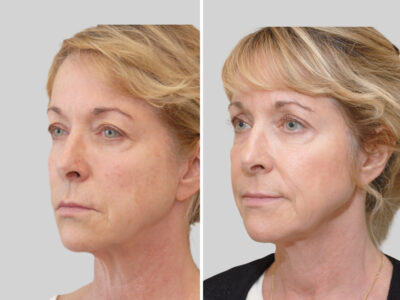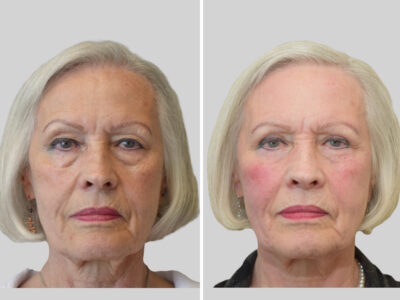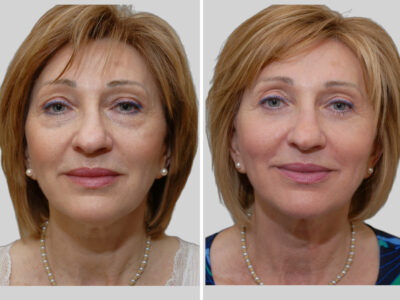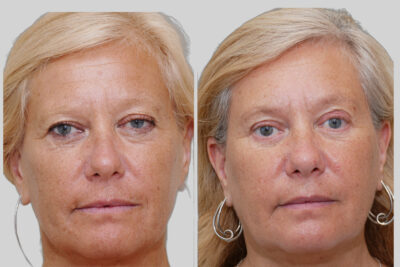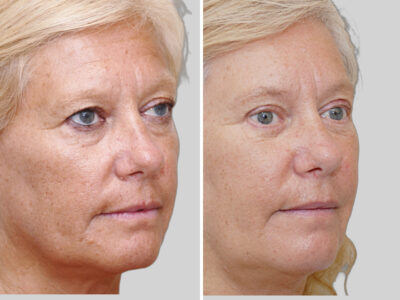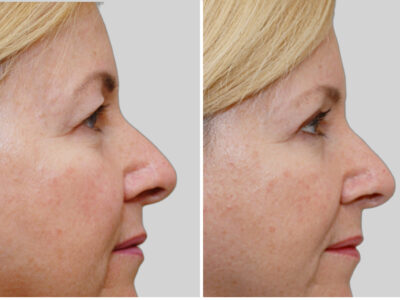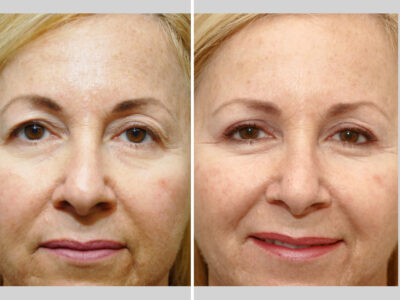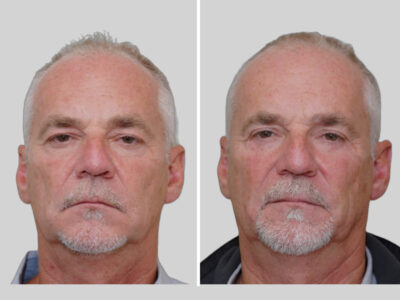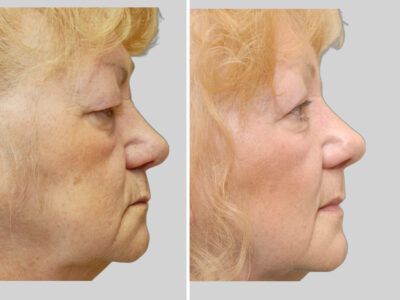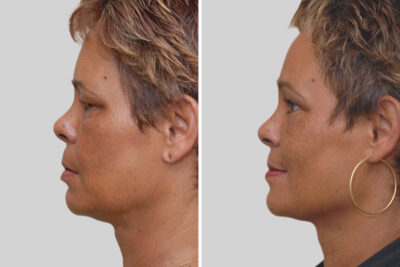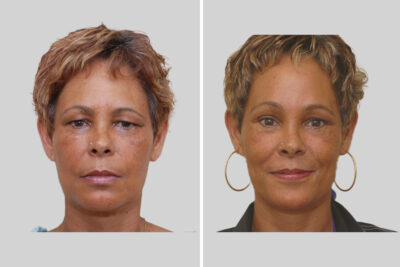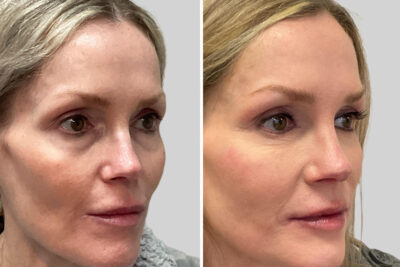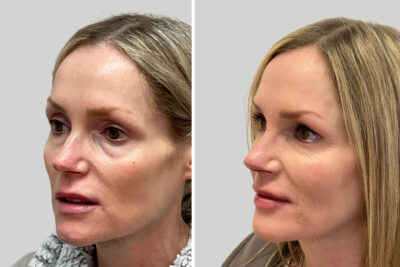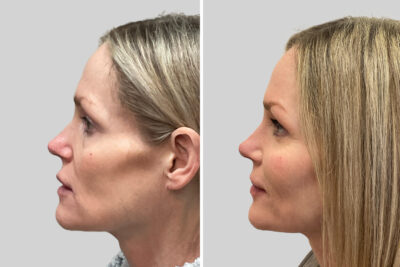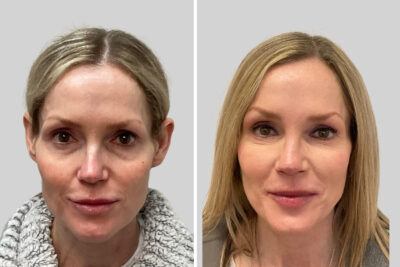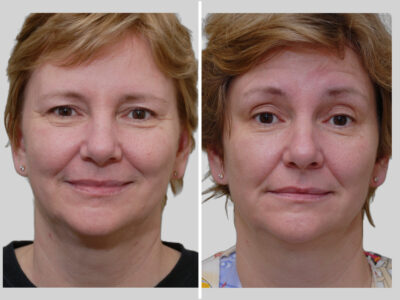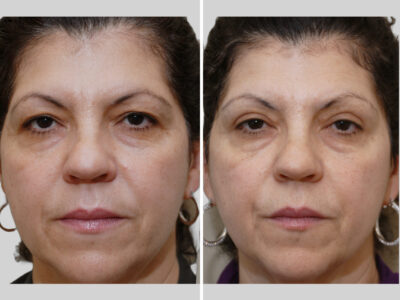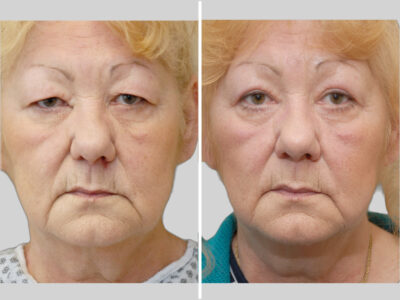Blepharoplasty
(Upper/lower eyelids)
Background
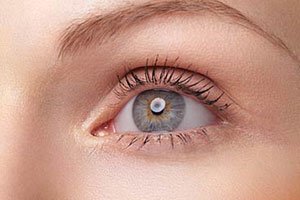 Blepharoplasty is surgery of the upper and / or lower eyelids to rejuvenate and restore a youthful appearance to the eyes. In the lower eyelids, the fibrous septum, or barrier that holds in the fat from around the eye, tends to weaken, and allows the fat to bulge forward resulting in bags under the eyes. The skin in the area of the lower eyelids also develops wrinkles with the passage of time. As a natural consequence of ageing our upper eyelid skin tends to become saggy and excessive. The problems around the eyelids are often compounded by sagging and descent of the forehead and brow, causing even more heaviness of the upper eyelids. Many patients who present with concern about their eyelids are surprised to hear that a lot of the problem is actually due to their brow, and not their eyelids. Often the general concern that the upper part of the face appears aged and tired is a result of a combination of both eyelid and brow problems, and thus the best approach may be to perform both Blepharoplasty and Brow Lift surgery. The decision about which, if any, procedure is right for you requires a close examination and discussion about your objectives with Dr. Goldberg. Another procedure that is commonly combined with Blepharoplasty is Facelift and Neck Lift (Rhytidectomy). Blepharoplasty can also be performed through incisions on the inside of the eyelid in particular circumstances. This is called Internal Blepharoplasty (Trans-Conjunctival).
Blepharoplasty is surgery of the upper and / or lower eyelids to rejuvenate and restore a youthful appearance to the eyes. In the lower eyelids, the fibrous septum, or barrier that holds in the fat from around the eye, tends to weaken, and allows the fat to bulge forward resulting in bags under the eyes. The skin in the area of the lower eyelids also develops wrinkles with the passage of time. As a natural consequence of ageing our upper eyelid skin tends to become saggy and excessive. The problems around the eyelids are often compounded by sagging and descent of the forehead and brow, causing even more heaviness of the upper eyelids. Many patients who present with concern about their eyelids are surprised to hear that a lot of the problem is actually due to their brow, and not their eyelids. Often the general concern that the upper part of the face appears aged and tired is a result of a combination of both eyelid and brow problems, and thus the best approach may be to perform both Blepharoplasty and Brow Lift surgery. The decision about which, if any, procedure is right for you requires a close examination and discussion about your objectives with Dr. Goldberg. Another procedure that is commonly combined with Blepharoplasty is Facelift and Neck Lift (Rhytidectomy). Blepharoplasty can also be performed through incisions on the inside of the eyelid in particular circumstances. This is called Internal Blepharoplasty (Trans-Conjunctival).
Benefits
Blepharoplasty surgery is a very common and relatively minor cosmetic operation that can greatly rejuvenate your face with minimal recovery time. It can be done in isolation or in combination with Facelift and Neck Lift (Rhytidectomy) and Brow Lift.
The Procedure
Depending on the exact procedure being done Blepharoplasty may be done under local or general anesthesia. At the start of the procedure Dr. Goldberg injects long acting local anesthetic to prevent pain nerves from being sensitized, and thereby minimizing discomfort after surgery. If a Brow Lift is also being performed, it is usually done first. In the upper eyelids the incision is placed along a natural crease in your eyelid and the excess skin and fat are removed. The incision on the lower eyelid is made along the eyelid margin below the eyelashes. It extends just past the outer corner of the eye along a natural skin crease (Crow’s feet). Extra muscle, skin and fat are excised. Sometimes fat is lifted and moved over to the area of hollowing between the eye and nose to restore a full youthful appearance. Often the muscle of the lower eyelid is tightened to help retain the residual fat from around the eye. Another common component of the procedure is to anchor the corner of the eye to the bone on the outer rim of the eye socket, called a “canthopexy”. This has the dual purpose of rejuvenating the shape of the eye, as well as tightening the lower eyelid in order to prevent eversion or pulling down of the lower eyelid.
Eyelid Surgery (Upper):
>
Eyelid Surgery (Lower):
Recovery
Dr. Goldberg prescribes several medications to ensure your comfort. You will be given some eye drops and ointment to help soothe and lubricate your eyes. Bruising and swelling around the eyes can look quite severe, and maximizes around 3 days after surgery, but by 1 week after the procedure this has mostly resolved and the residual bruising can usually be camouflaged with make-up or dark glasses. You need to return for a check-up 5-7 days after surgery to have sutures removed from the upper eyelid, and at this point you can return to regular activities. You need to avoid heavy work-outs and strenuous activity for 4 weeks after surgery.
Risks
There are general risks with Blepharoplasty such as bruising, bleeding, infection, and risks associated with general anesthetic. There are also some specific risks. As the surgery is around your eye there is the remote and very rare possibility of injury to the eye or bleeding around the eye which in the worst case scenario could impair vision. The chance of this happening is so low that the exact odds cannot be accurately estimated. Other more common problems include dryness of the eyes or problems with tearing in bright light or wind. Eversion or downward pulling of the lower eyelid may occur in some people, but usually resolves within 6 weeks with some simple techniques of massage and taping. Dr. Goldberg usually prevents this from happening by doing a concurrent “canthopexy” in which the lower eyelid is tightened to give extra support. Sometimes there is mild asymmetry between the eyes which may be due to pre-existing asymmetry or surgical variation.
Alternatives
Some minor hollowing of the lower eyelid may be addressed by the use of Filler Prod. Ageing around the eyes may be a result of sagging of the forehead and brow, and may be better addressed with a Brow Lift or a combination of procedures. Some minor Crow’s Feet may be addressed.
Internal Blepharoplasty (Trans-Conjunctival)
Some patients do not have a lot of excess skin or wrinkles in their lower eyelids, but rather their main concern is the appearance of bags under the eyes. For these patients the best approach is often to use internal incisions in the lower eyelid only in order to excise and reduce these pockets of fat. This is called Internal or Trans-Conjunctival Blepharoplasty. The benefit of this procedure is that it can address the main problem, but avoid any external scars. Also, some people are predisposed to developing eversion of the lower eyelid after lower lid Blepharoplasty, and this type of procedure minimizes the risk of that happening. The choice to do Internal Blepharoplasty is made after examination by Dr. Goldberg and a discussion about your specific concerns. This procedure can be done in combination with a Mid-Face Lift, which can elevate sagging around the central area of your face and increase the youthful fullness in your cheeks. Trans-Conjunctival Blepharoplasty is for the lower eyelids only, but can also be done with upper eyelid Blepharoplasty at the same time.

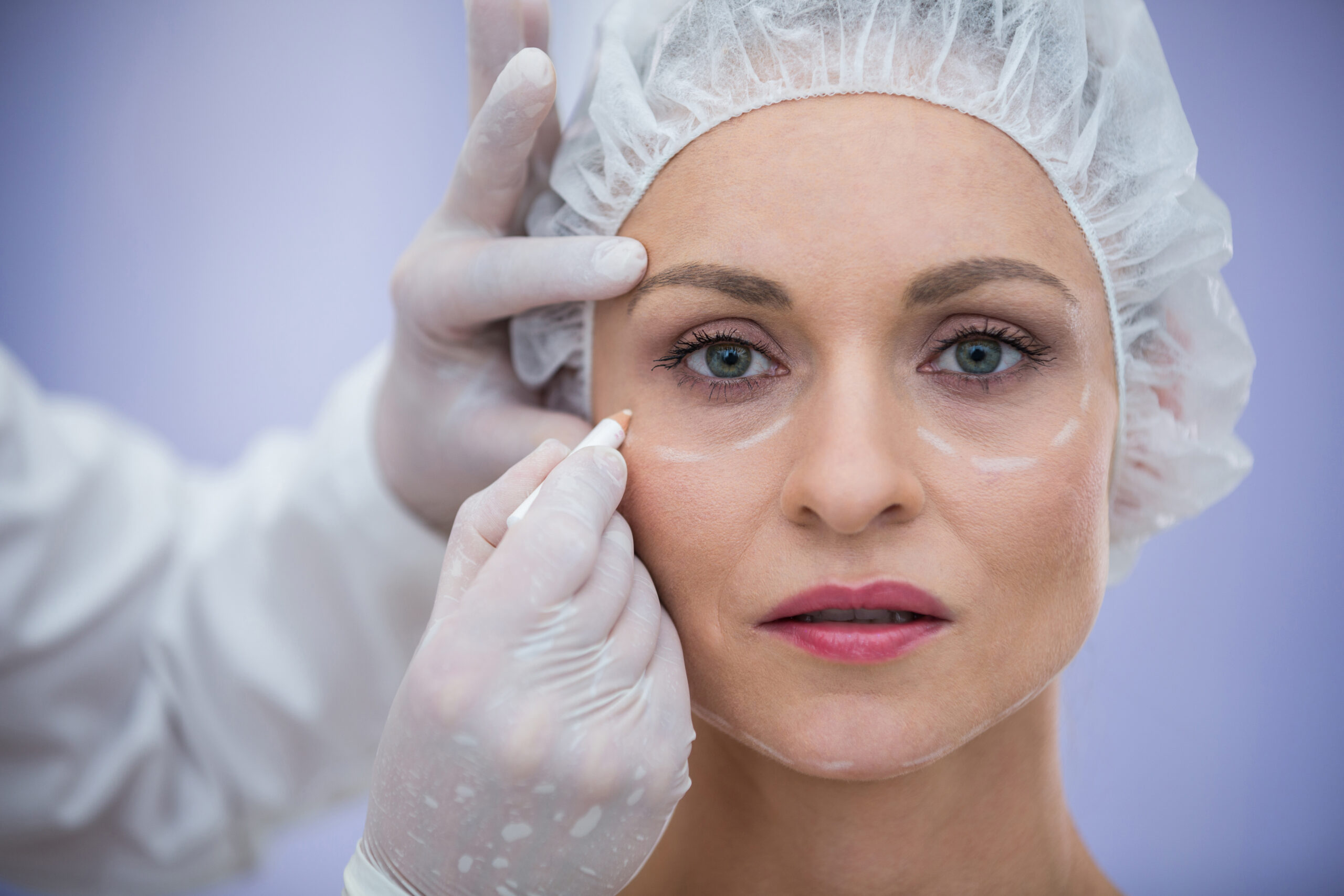 Face
Face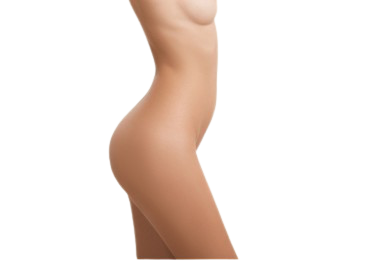 Body
Body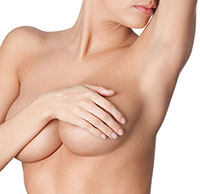 Breast
Breast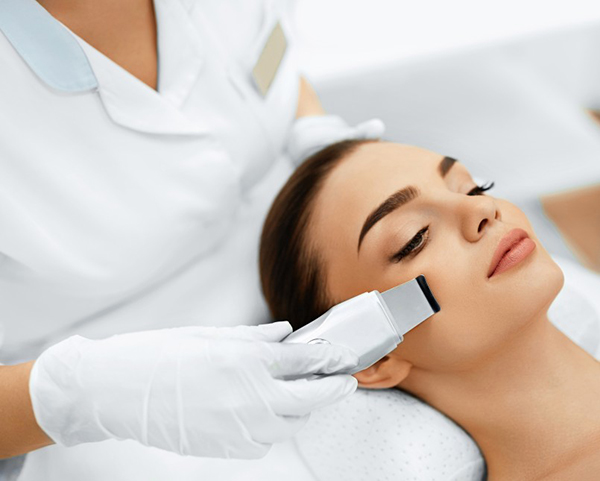 Non-Surgical
Non-Surgical Hair Transplants
Hair Transplants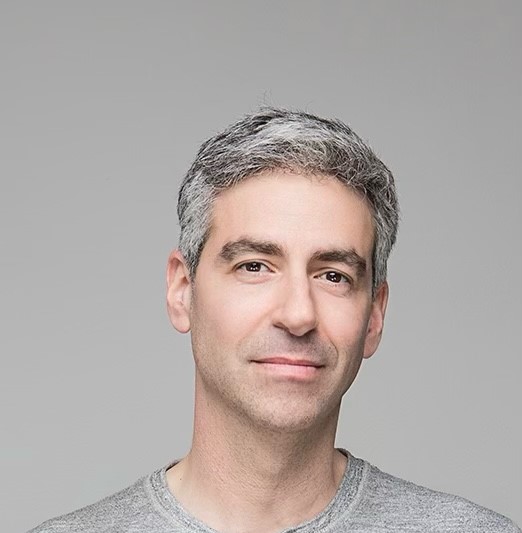 Dr. Cory S. Goldberg
Dr. Cory S. Goldberg Our Staff
Our Staff Policies
Policies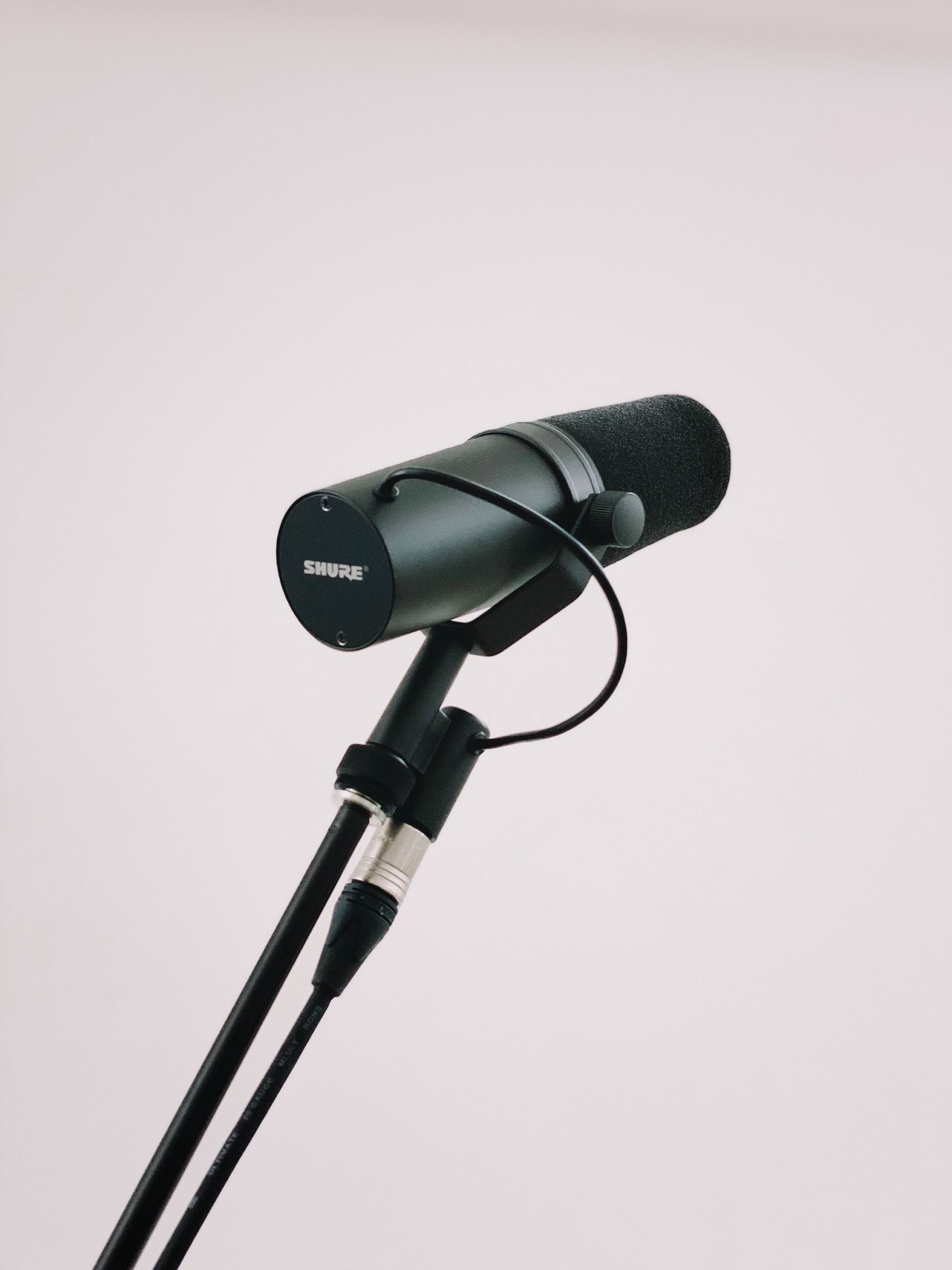 Media
Media Reviews
Reviews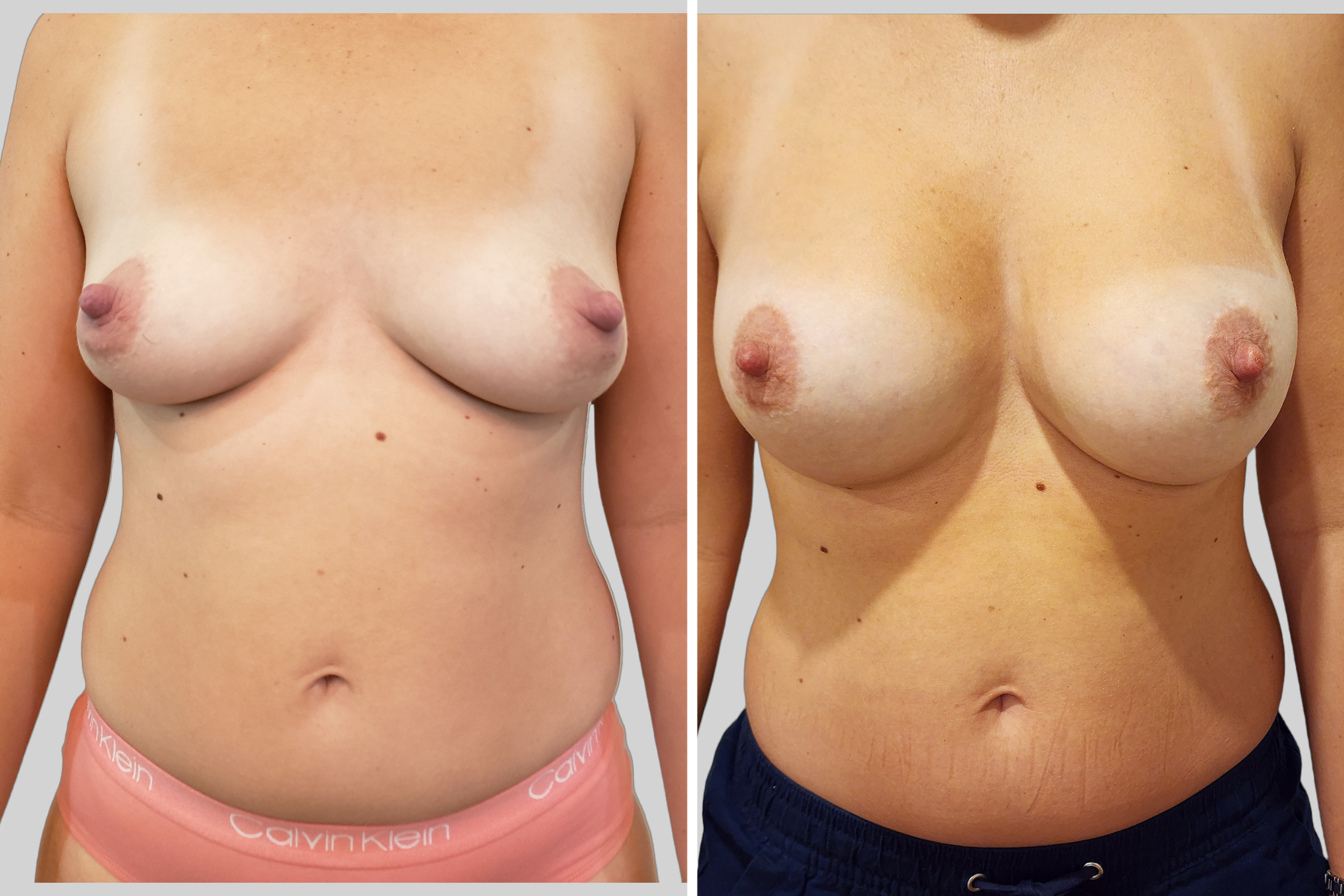 Breast Gallery
Breast Gallery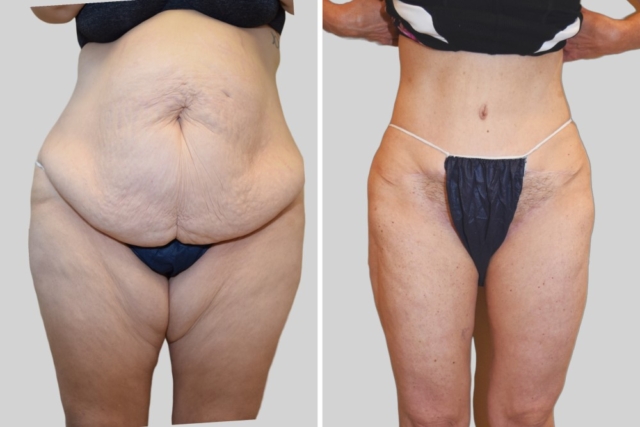 Body Gallery
Body Gallery